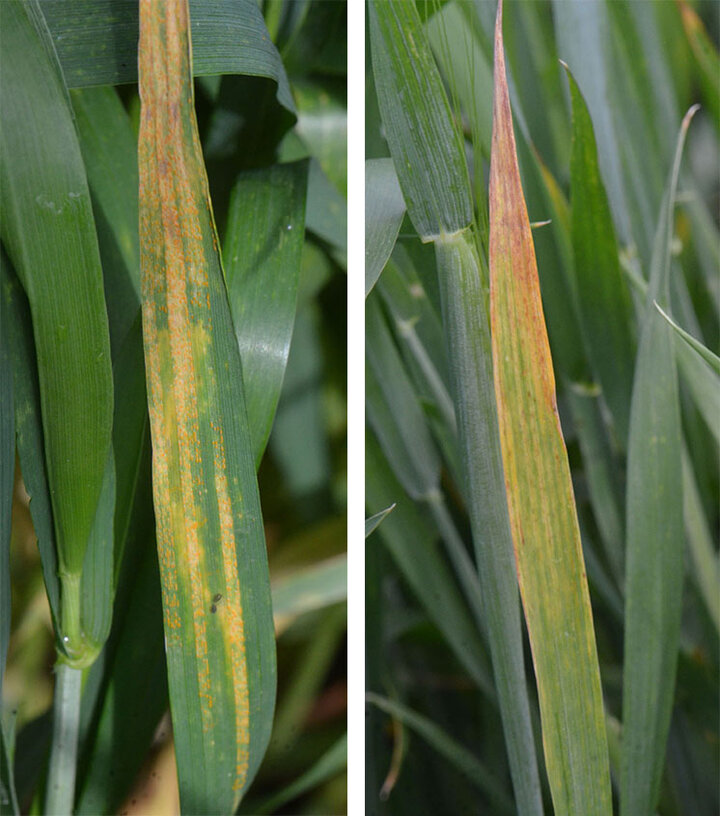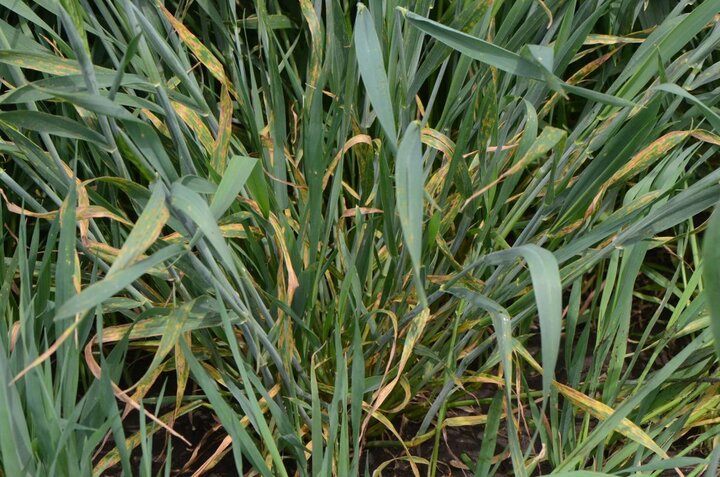Research plots at UNL’s Agricultural Research and Development Center (ARDC) were surveyed for diseases on May 12. These plots are not sprayed with fungicide and therefore the diseases and disease levels in them can be representative of those in growers’ fields under similar conditions.
Although the top of the canopy looked green (Figure 1), moderate to severe levels of disease were found in the lower canopy. In plots with a thick stand planted with susceptible varieties/lines, approximately one-third of the lower canopy was yellow or dying due to powdery mildew (Figure 2). In some plots, powdery mildew had progressed to the stage where fruiting structures had formed (Figure 3).
Stripe rust (Figure 4) was also developing rapidly, with severe levels in some plots. It was present in the majority of plots surveyed. Fungal leaf spot diseases (Figure 6), mostly Septoria leaf blotch, were developing to moderate to severe levels in plots planted with susceptible varieties/lines.
Recent rainfall at the ARDC is partly responsible for the rapid development of stripe rust and fungal leaf spots. Powdery mildew is favored by high humidity which is always present in the lower canopy of thick stands. It has developed over the last several weeks and is killing most of the lower leaves in susceptible varieties/lines.
Another disease present at moderate incidence was barley yellow dwarf (Figure 5), a virus disease transmitted by aphids.
Management
Most wheat fields are at the flag leaf to the boot growth stage, with some starting to head. If you see fungal diseases (stripe rust, leaf rust, leaf spots, or powdery mildew) in several spots or in most of the field, consider applying a fungicide to protect the flag leaf. The current weather pattern (fluctuation between warm and cool days plus rainfall) is favorable to development of fungal diseases.
Virus diseases cannot be controlled once they occur. Fields affected by severe wheat streak mosaic, especially in the Panhandle, may also have stripe rust and other fungal diseases. It may not be worthwhile to spray these fields to control stripe rust and any other fungal diseases that may be present. Before making a decision to spray these fields, consult a crop insurance adjuster.

Figure 3. (right) Fruiting structures of powdery mildew on a lower leaf sheath in the plot shown in Figure 2.

Figure 5. (right) Barley yellow dwarf in a plot at the ARDC on May 11.


